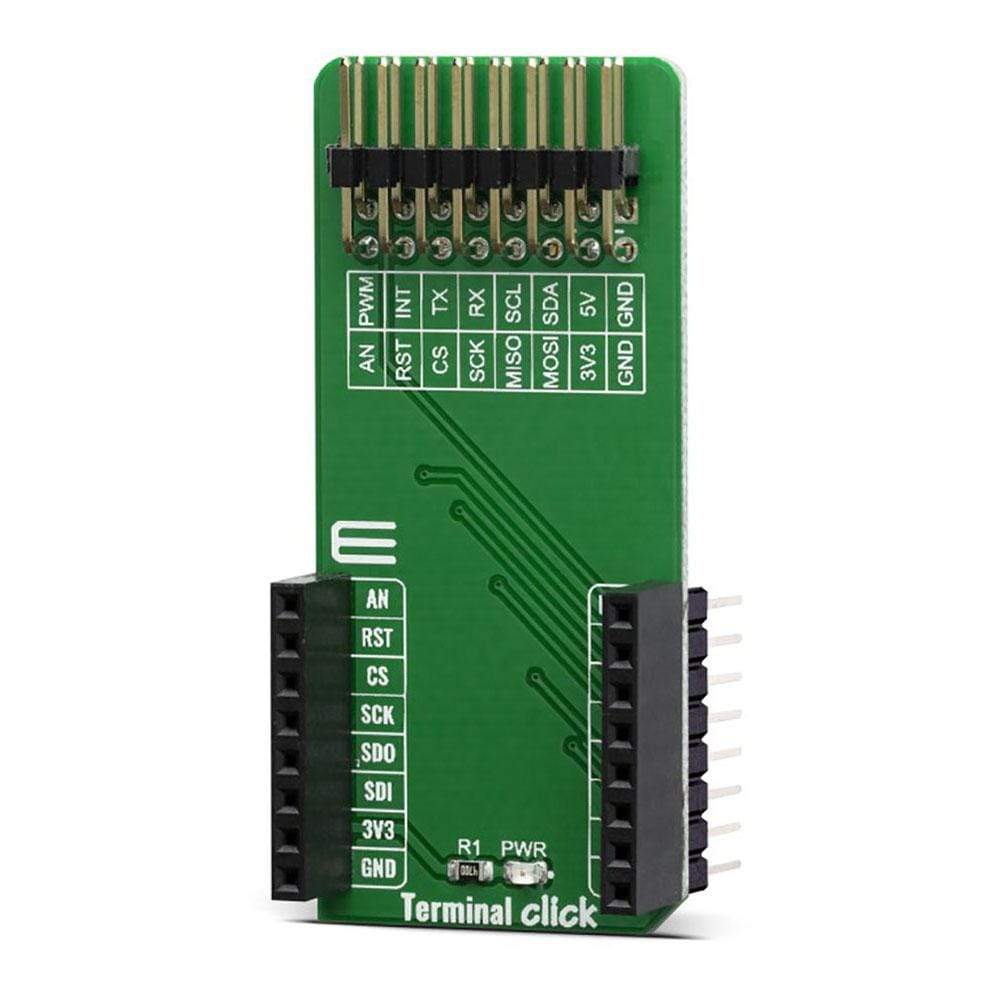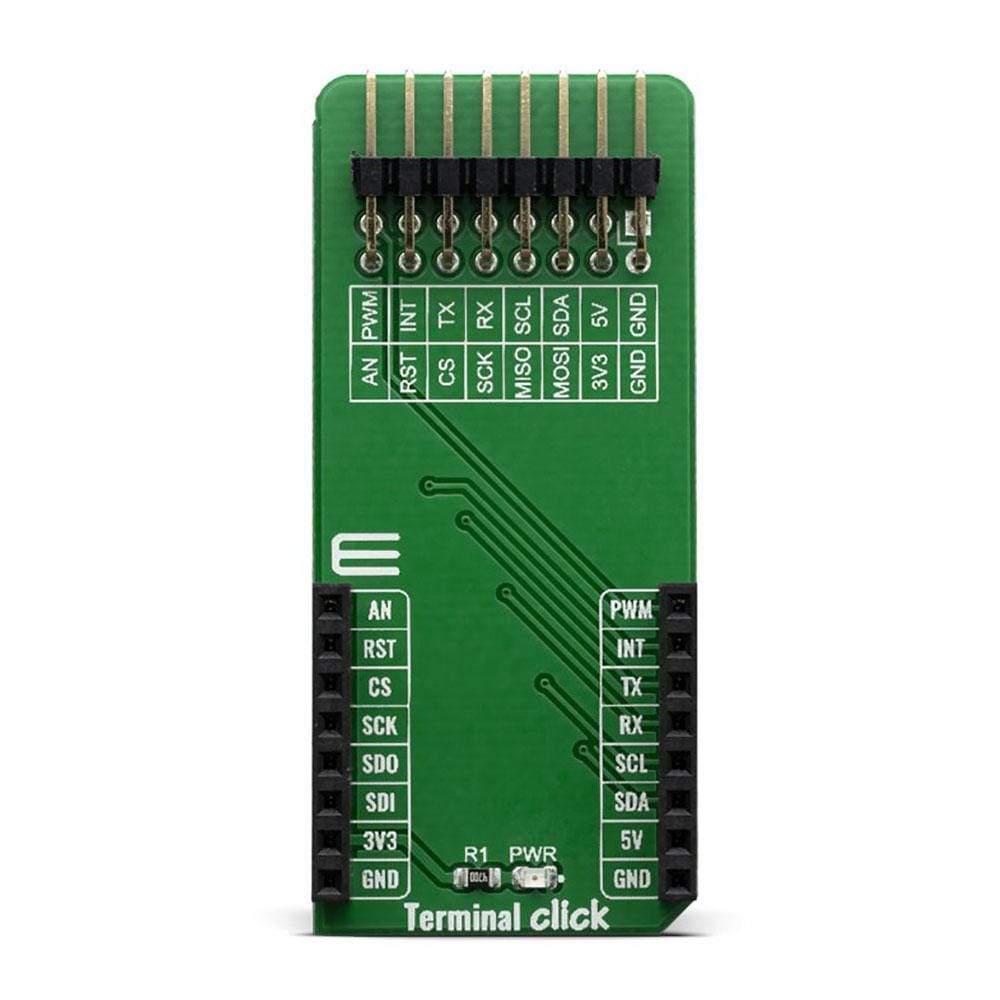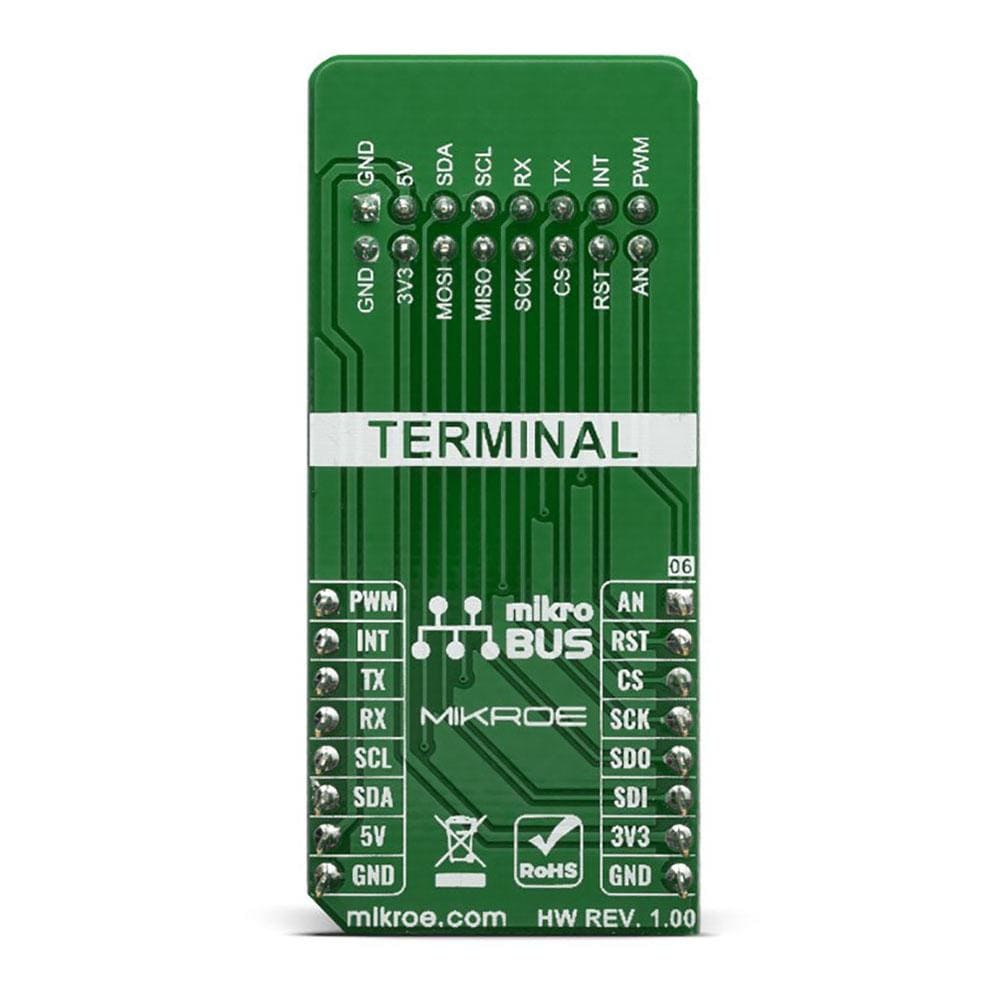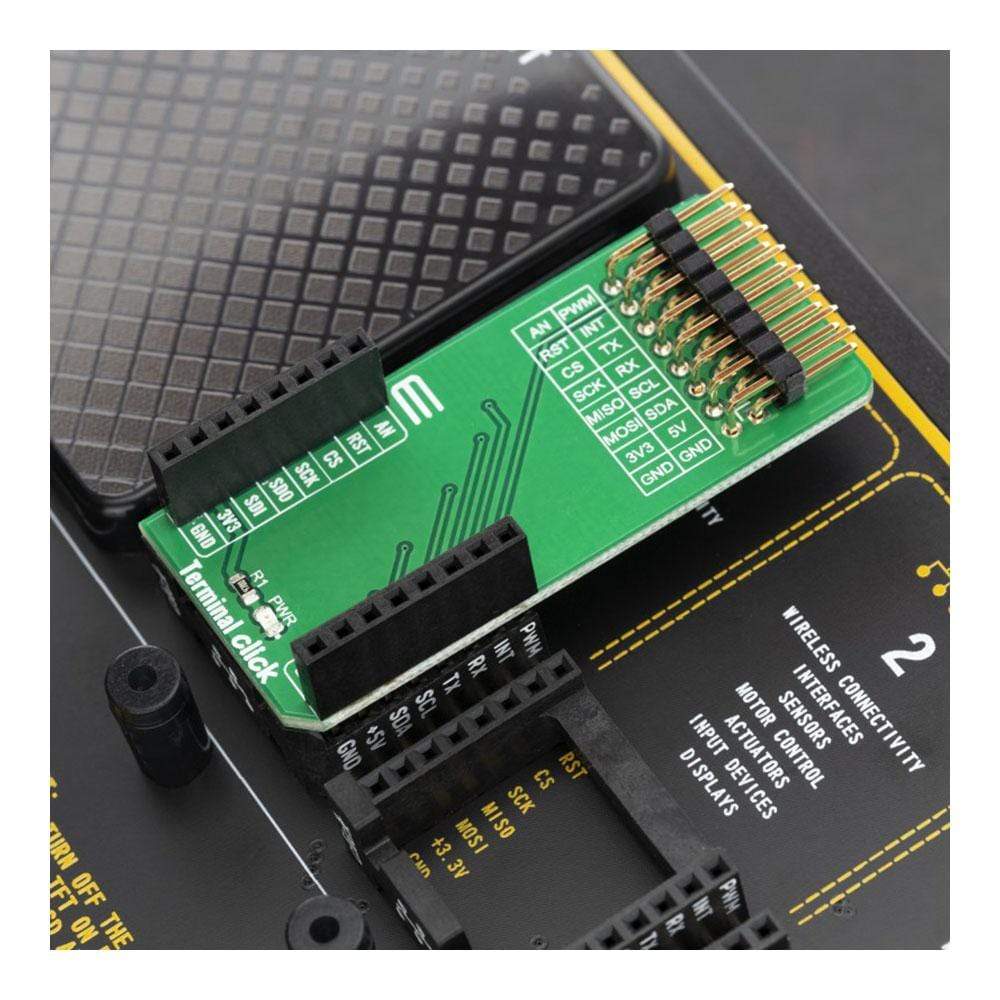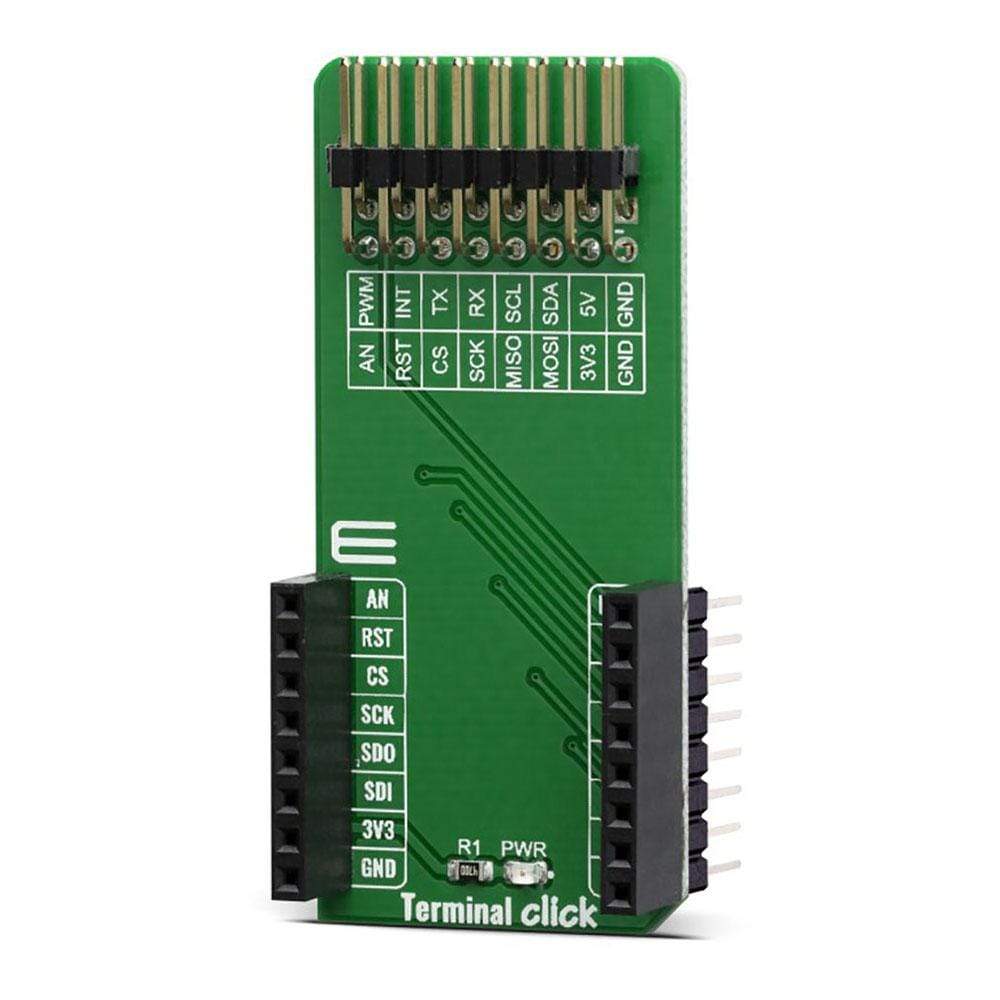
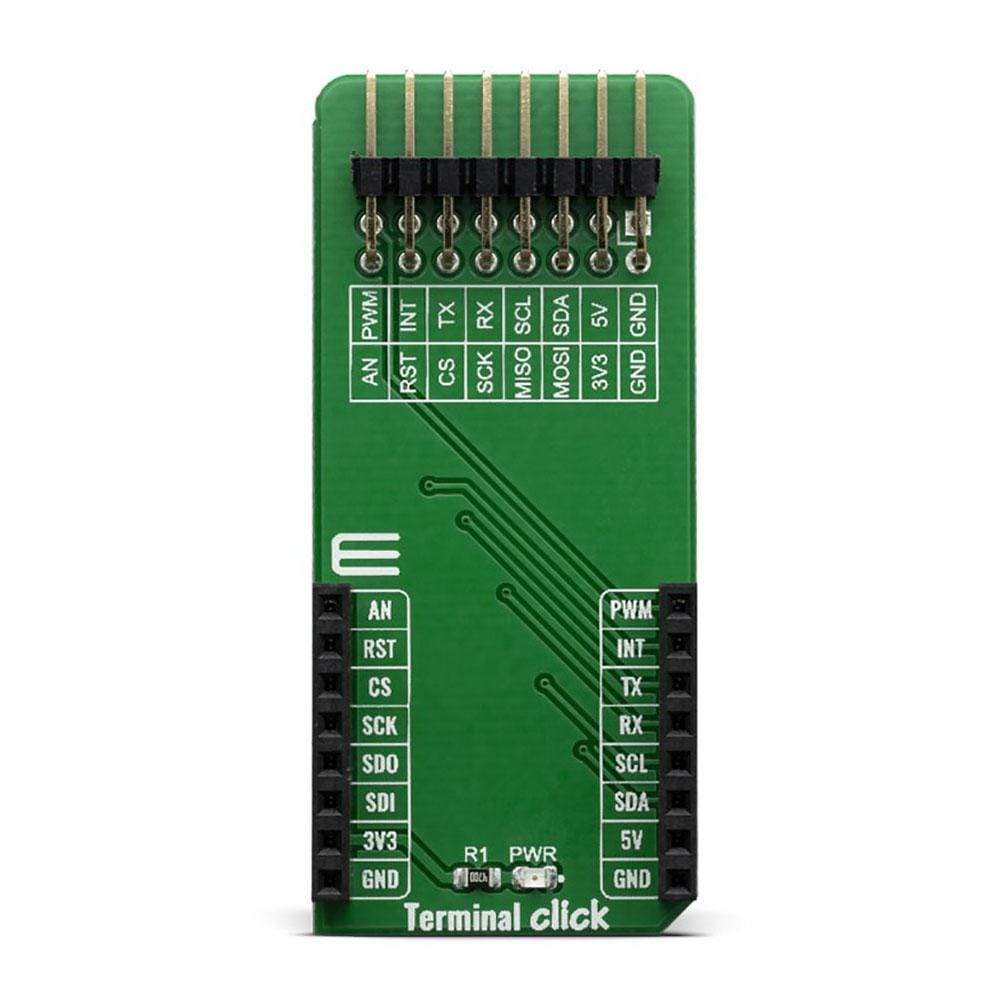
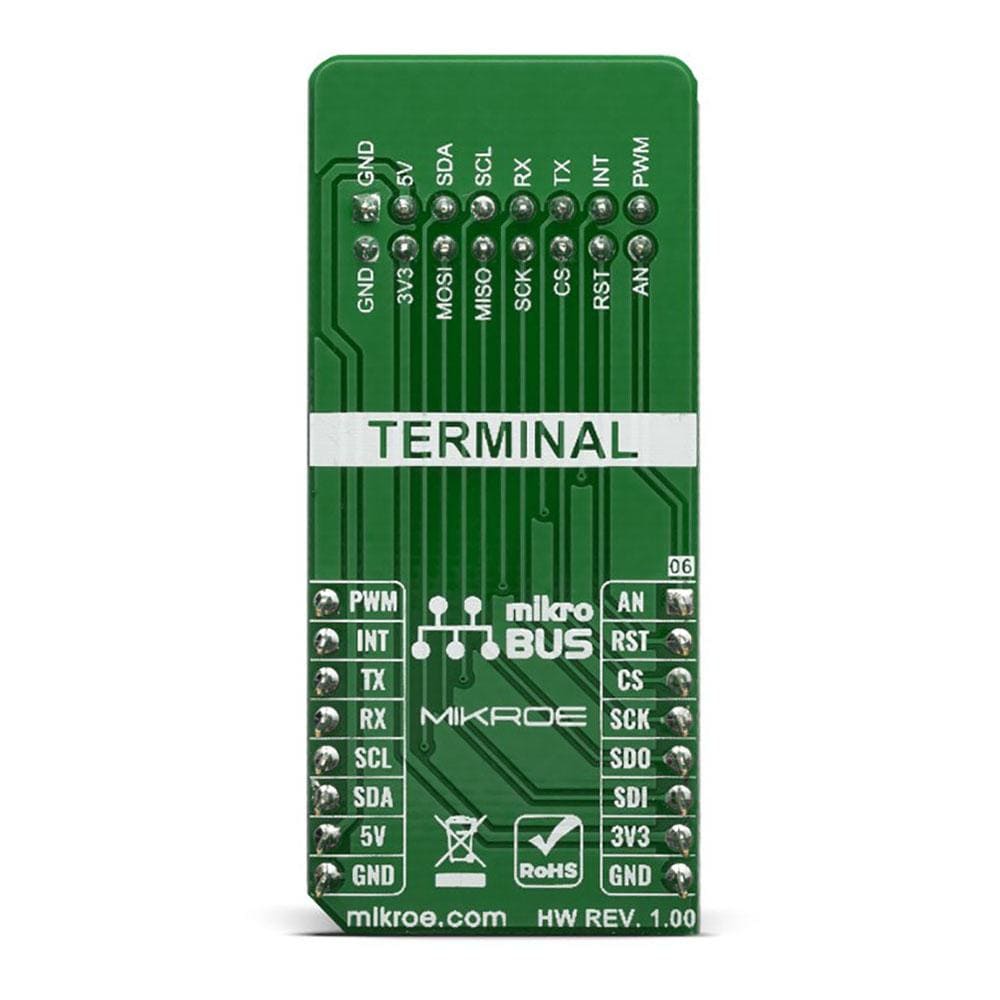
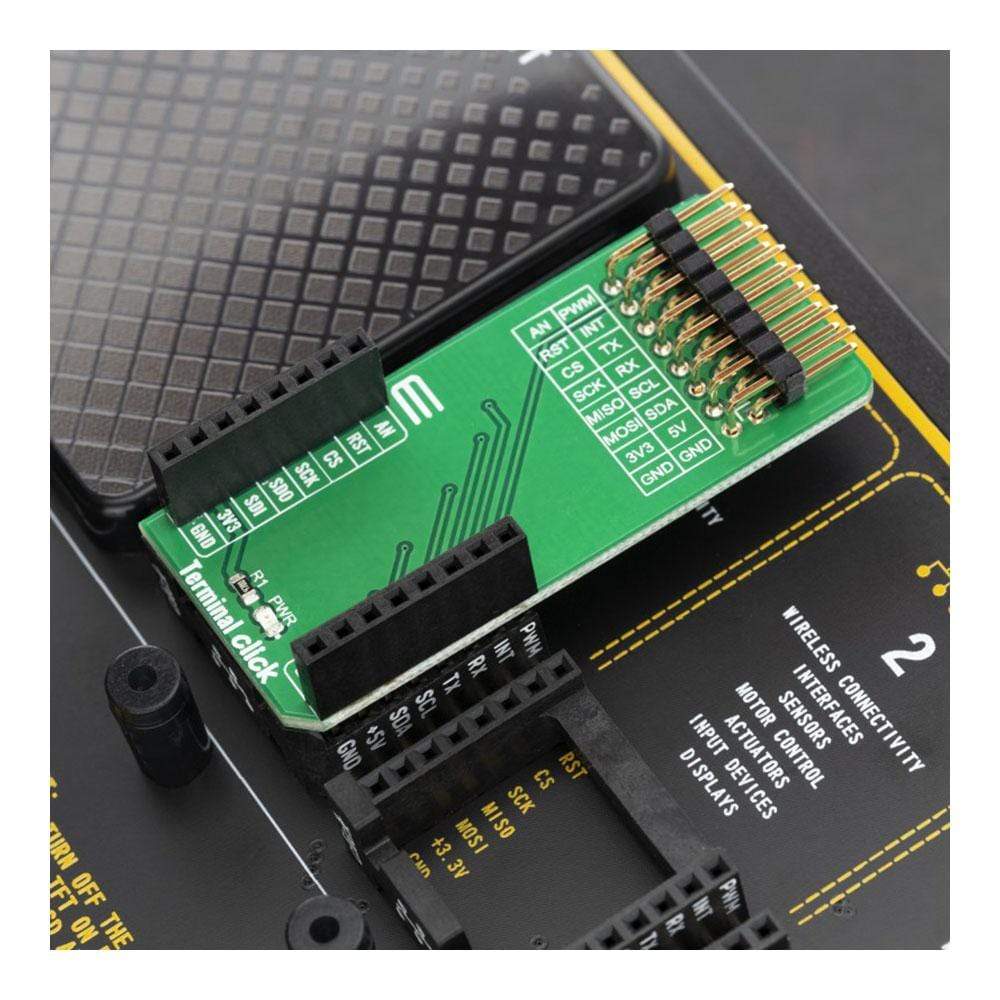
Key Features
Overview
The Ultimate Solution for MikroBus Signal Access: The Terminal Click Board™
Unlock the true potential of your MikroBus signals with the innovative Terminal Click Board™! Whether you're looking to harness the power of I2C or SPI interfaces, this cutting-edge solution is tailor-made for the task.
Why Choose the Terminal Click Board™?
Revolutionize the way you interact with MikroBus signals using our state-of-the-art Terminal Click Board™. With its seamless compatibility, you can seamlessly integrate a Bus Analyzer like the renowned Total Phase Beagle I2C/SPI Sniffer. This means you'll have unparalleled insight into your bus operations, leading to enhanced efficiency and error detection.
Unleash the Power of Connectivity
The Terminal Click Board™ doesn't stop at signal analysis — it's also your gateway to driving Click Board™ Boards from a PC Host Adapter. Imagine the possibilities with the exceptional Total Phase Aardvark or the lightning-fast Cheetah adapter. This combination unlocks new horizons for your projects, offering you the control and versatility you've always craved.
Features at a Glance
- Seamless integration with MikroBus signals
- Full compatibility with I2C and SPI interfaces
- Connectivity with Total Phase Beagle I2C/SPI Sniffer for in-depth analysis
- Empower Click Board™ Boards with PC Host Adapters like Total Phase Aardvark or Cheetah
Upgrade Your Signal Access Today!
Don't miss out on the opportunity to supercharge your MikroBus signal utilization. The Terminal Click Board™ is your ticket to streamlined analysis and unmatched connectivity. Get ready to take your projects to new heights — order your Terminal Click Board™ now!
Downloads
La solution ultime pour l'accès au signal MikroBus : le Terminal Click Board™
Libérez le véritable potentiel de vos signaux MikroBus avec l'innovant Terminal Click Board™ ! Que vous cherchiez à exploiter la puissance des interfaces I2C ou SPI, cette solution de pointe est conçue sur mesure pour cette tâche.
Pourquoi choisir le Terminal Click Board™ ?
Révolutionnez la façon dont vous interagissez avec les signaux MikroBus grâce à notre Terminal Click Board™ de pointe. Grâce à sa compatibilité parfaite, vous pouvez intégrer de manière transparente un analyseur de bus comme le célèbre Total Phase Beagle I2C/SPI Sniffer. Cela signifie que vous aurez un aperçu inégalé de vos opérations de bus, ce qui vous permettra d'améliorer l'efficacité et la détection des erreurs.
Libérez la puissance de la connectivité
Le Terminal Click Board™ ne se limite pas à l'analyse du signal : c'est également votre passerelle pour piloter les cartes Click Board™ à partir d'un adaptateur hôte PC. Imaginez les possibilités avec l'exceptionnel Total Phase Aardvark ou l'adaptateur ultra-rapide Cheetah. Cette combinaison ouvre de nouveaux horizons pour vos projets, vous offrant le contrôle et la polyvalence dont vous avez toujours rêvé.
Aperçu des fonctionnalités
- Intégration transparente avec les signaux MikroBus
- Compatibilité totale avec les interfaces I2C et SPI
- Connectivité avec Total Phase Beagle I2C/SPI Sniffer pour une analyse approfondie
- Cartes Empower Click Board™ avec adaptateurs d'hôte PC comme Total Phase Aardvark ou Cheetah
Améliorez votre accès au signal dès aujourd'hui !
Ne manquez pas l'opportunité de booster l'utilisation de votre signal MikroBus. Le Terminal Click Board™ est votre ticket pour une analyse simplifiée et une connectivité inégalée. Préparez-vous à porter vos projets vers de nouveaux sommets — commandez votre Terminal Click Board™ dès maintenant !
| General Information | |
|---|---|
Part Number (SKU) |
MIKROE-3745
|
Manufacturer |
|
| Physical and Mechanical | |
Weight |
0.021 kg
|
| Other | |
Country of Origin |
|
HS Code Customs Tariff code
|
|
EAN |
8606018716937
|
Warranty |
|
Frequently Asked Questions
Have a Question?
Be the first to ask a question about this.

